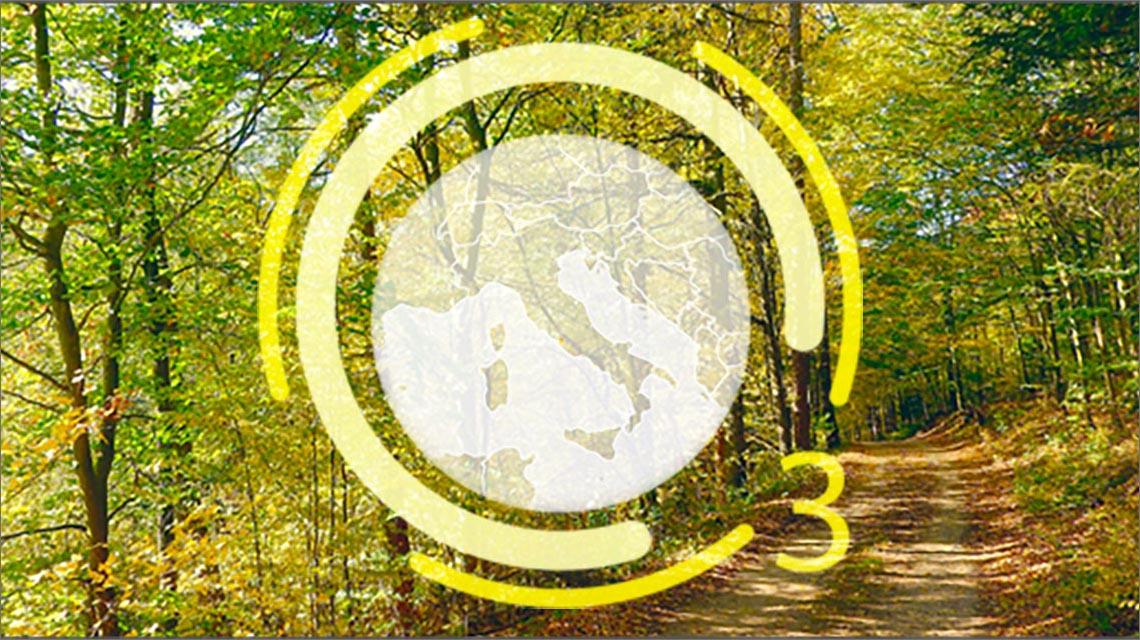Italian National Agency for New Technologies, Energy and Sustainable Economic Development

Environment: In italy wood production at risk due to ozone pollution
In Italy, the economic value of forests has dropped by 10% due to ozone pollution which has led to a reduction of more than 1% of the forest area destined to timber production, with potential damage that could reach up to 2.85 billion euro (around 870 euros per hectare), as shown in a study conducted by a team of 10 researchers from ENEA, Cnr and the University of Florence, in collaboration with the French satellite services company ARGANS, published in Nature Scientific Reports. Furthermore, the research highlights how a loss of economic profitability can lead, in the long term, to a progressive abandonment of the most exposed forest areas, with a series of repercussions on the ecosystem services.
Tropospheric ozone(O3) is a gaseous pollutant that has negative effects on photosynthesis and, consequently, on the absorption capacity of carbon dioxide by vegetation. On a global level, this could lead to an increase in the costs of reducing greenhouse gases up to 4.5 trillion dollars by 2100 ”, explained Alessandra De Marco of the ENEA Department of Sustainability of Production and Territorial Systems, one of the three ENEA authors of the study.
In the publication, Italian forests were considered as a case study because they are more exposed to serious O3 risk than those of Northern Europe, as the warmer climate stimulates the formation of this gas. "For the first time, an economic analysis was made that took into consideration the so-called phytotoxic dose of ozone, that is the quantity of O3 absorbed by plants during growing season, through the stomata present in the leaves and needles, is considered a better index than just the concentration of ozone in the air. Furthermore, we calculated the biomass losses with a spatial resolution of 12 km2”, explained Alessandro Anav of the ENEA Climate Modelling and Impacts Laboratory.
Italy is an ozone pollution hot spot, due to high air temperatures and solar radiation. The results were significantly different among the Italian regions: Sardinia showed the greatest reduction in the profitable forest area, with a loss of over 10 thousand hectares (- 6.2%), followed by Calabria (-5.811 hectares, - 2.5%), Sicily (-3.362 hectares, -3.1%), Tuscany (-2.432 hectares, -0.4%) and Trentino-Alto Adige (-2.319 hectares, -1.4%). But the biggest economic losses were suffered by Liguria (€ 1,229 per hectare), Campania (€ 628), Calabria (€ 568) and Lazio (€ 527).
In Italy, most of the wood production is represented by firewood with an annual production of about 5.5 million m3, followed by poles (0.8 million) and roundwood for sawmills and paper mills (0.9 million) . The most affected by ozone pollution were firewood and poles which suffered, on average, a loss of 7.5% and 7.4%, while roundwood recorded a smaller decrease of around 5%. In Europe, the timber sector employs 4.5 million people (2018 data), while in Italy there are over 400 thousand employees in approximately 87 thousand companies, with a total turnover of about 35 billion dollars plus about 21 billion more relating to the furniture sector *.
